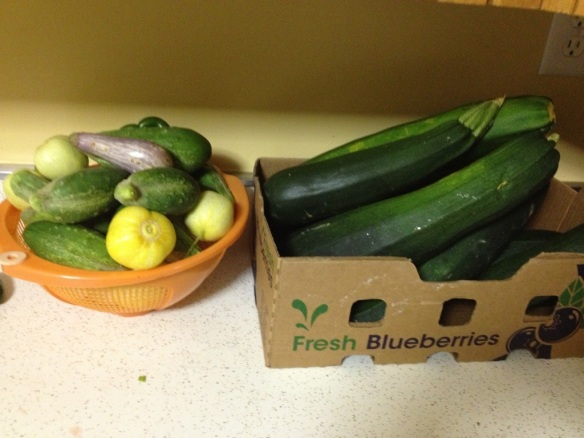Is this thang’ on…
Oh…My…Gardens!
Between the brutally hot and humid temperatures, then the rain and visiting family (rinse and repeat) my gardens have been sorely neglected, ignored, forgotten, brushed aside…
You get the point…
And now for photo catch up

Bell Pepper, Tomatoes and Onion
All from the garden & ready for Spaghetti

Cucumbers, Zucchinis & One Eggplant

Lots of Zucchini…ready to freeze

Lemon, Dragon Egg & Boston
Cucumbers (w/Jalapeños & Beans)
Lets Ask Gary…Bug #5
Found this guy, pooping away.





Bug #5: The following is from Wikipedia. Euchaetes egle, the Milkweed Tussock Caterpillar or Milkweed Tiger Moth, is a moth in the family Arctiidae. It is a common mid- through late-summer feeder on milkweeds and dogbane. Like most species in this family, it has chemical defenses it acquires from its host plants, in this case, cardiac glycosides (Weller et al., 1999). These are retained in adults and deter bats, and presumably other predators, from feeding on them (Hristov and Conner 2005). This moth frequently uses Milkweeds (Asclepias spp.) and sometimes dogbane (Apocynum spp.) as larval host plants. Larvae often feed on older milkweed shoots, and seldom share shoots with Monarchs Danaus plexippus, which prefer younger ones (Wagner, 2005). Dogbanes and Milkweeds produce a sticky latex that can impede larval feeding. Early instars avoid the veins by skeletonizing the leaves. Older larvae sever the veins that supply the latex, which reduces laxtex flow to the area they feed on (Dussourd and Denno, 1991). Gary
LikeLike